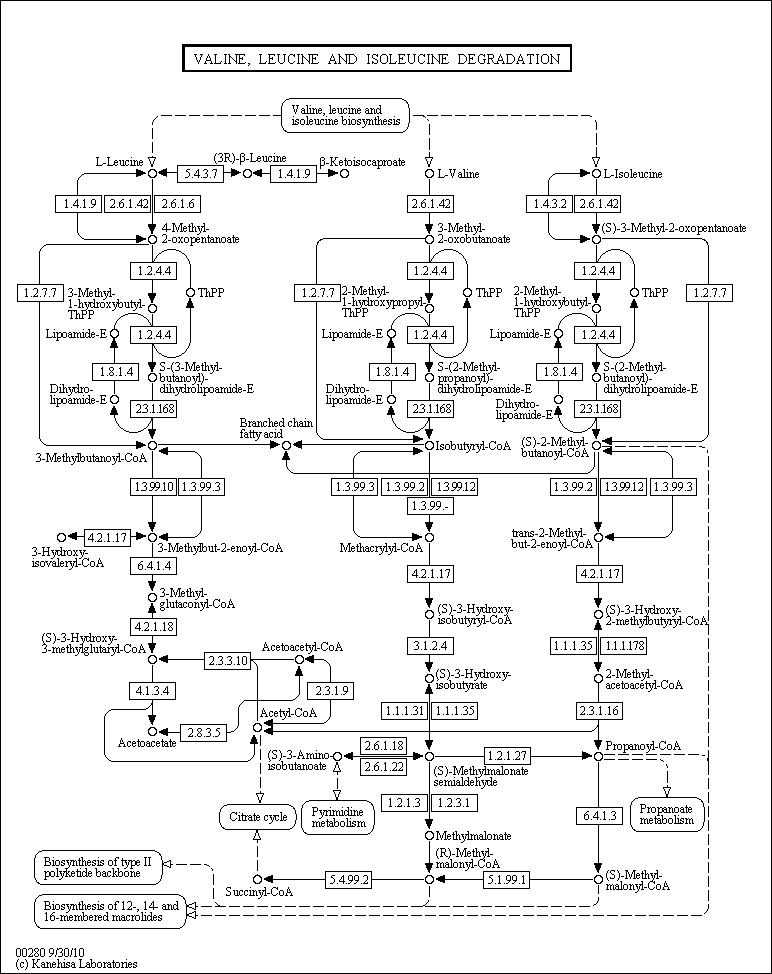Valine, Leucine and Isoleucine Degredation
Description: Valine, Isoleucine and Leucine are essential amino acids are identified as the branched-chain amino acids, BCAAs. Because this arrangement of carbon atoms cannot be made by humans, these amino acids must be obtained from the diet. The catabolism of all three amino acids starts in muscle and yields NADH and FADH2 which can be utilized for ATP generation. The catabolism of all three of these amino acids uses the same enzymes in the first two steps. The first step in each case is a transamination using a single BCAA aminotransferase, with \u03b1-ketoglutarate as the amine acceptor. As a result, three different \u03b1-keto acids are produced and are oxidized using a common branched-chain \u03b1-keto acid dehydrogenase (BCKD), yielding the three different CoA derivatives. Isovaleryl-CoA is produced from leucine by these two reactions, alpha-methylbutyryl-CoA from isoleucine, and isobutyryl-CoA from valine. These acyl-CoA\u2019s undergo dehydrogenation, catalyzed by three different but related enzymes, and the breakdown pathways then diverge. Leucine is ultimately converted to acetyl-CoA and acetoacetate; isoleucine to acetyl-CoA and succinyl-CoA; and valine to propionyl-CoA (and subsequently succinyl-CoA). Under fasting conditions, substantial amounts of all three amino acids are generated by protein breakdown. In muscle, the final products of leucine, isoleucine, and valine catabolism can be fully oxidized via the citric acid cycle; in liver they can be directed toward the synthesis of ketone bodies (acetoacetate and acetyl-CoA) and glucose (succinyl-CoA). Because isoleucine catabolism terminates with production of acetylCoA and propionylCoA it is both glucogenic and ketogenic. Because leucine gives rise to acetylCoA and acetoacetylCoA, it is classified as strictly ketogenic. Source: Pathman

Related BMRB Molecules
- L-Isoleucine
- L-Leucine
- Methyl-oxobutanoic-acid
- 3-Methyl-2-oxopentanoic Acid
- 4-Methyl-2-oxovaleric-acid
- Methylmalonic_acid
- L-Valine
For complete information about pathway, see KEGG [map00280]
